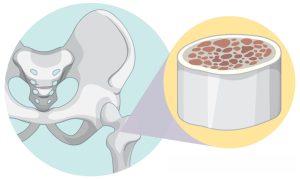What is a Bone Biopsy?
A bone biopsy is a medical test where a small sample of bone tissue is taken from the body so that doctors can look at it under a microscope. This helps them figure out what’s happening inside the bone, especially when there are signs of disease such as unexplained bone pain, swelling, or a suspicious area seen on an X-ray or scan.
Bone biopsies are commonly used to diagnose:
- Bone infections
- Bone cancers (primary or metastatic)
- Unexplained bone pain or swelling
- Unusual spots or masses in the bone found on imaging scans
There are two main types of bone biopsy: needle biopsy and open biopsy
—
Why is a Bone Biopsy Done?
Doctors may recommend a bone biopsy for several reasons:
- To diagnose cancer: A biopsy can tell whether a bone lump is cancerous or not.
- To identify infections: If a bone is suspected to be infected, a biopsy can confirm it and help find the specific bacteria.
To understand *abnormal results from scans: If an X-ray, CT, or MRI shows something unusual in the bone, a biopsy helps clarify what it is.
To determine how far cancer has spread (in cases of known cancer).
This test is very helpful in making a clear and accurate diagnosis, which is key to choosing the best treatment.
Types of Bone Biopsies
1. Needle Biopsy
This is the most common type. A special hollow needle is inserted through the skin to collect a small piece of bone. There are two kinds:
Fine-needle aspiration biopsy: Uses a thin needle to remove small bits of tissue.
Core needle biopsy: Uses a thicker needle to remove a larger sample.
Tru-cut biopsy : Usually done for soft tissue tumors where a preloaded gun injects a needle which removes tumor bits and comes back in less that a second.
Needle biopsies are often done with the help of imaging tools like a CT scan or X-ray to guide the needle to the exact spot.
2. Open Biopsy
In this method, a surgeon makes a small cut in the skin to expose the bone and remove a sample. It’s usually done in a hospital under general or local anesthesia. This type is used when more tissue is needed or when the location is hard to reach with a needle.
—
What to Expect During the Procedure
Here’s a general idea of what happens during a bone biopsy:
Before the Procedure
You may be asked to stop taking certain medications, like blood thinners.
You might have blood tests to check your clotting levels.
You’ll be told not to eat or drink for several hours if you’re getting anesthesia.
During the Procedure
- If it’s a needle biopsy, you’ll likely be awake, and the area will be numbed with a local anesthetic.
- For open biopsy, you’ll receive general anesthesia, so you’ll be asleep during the procedure.
- The doctor will take a small sample of bone and send it to a lab.
After the Procedure
- You may feel some soreness at the biopsy site.
- There might be a small bandage or stitches, depending on the type.
- Most people can go home the same day or after a short observation period.
—
Are There Any Risks?
Like any medical procedure, bone biopsy carries some risks, although they are rare. These can include:
Pain or discomfort at the site
Bleeding or bruising
Infection at the biopsy site
Injury to nearby tissues (rare)
Your healthcare team will take steps to minimize these risks, and the benefits of getting an accurate diagnosis usually outweigh them.
—
What Happens to the Biopsy Sample?
Once the sample is taken, it’s sent to a pathology lab. A pathologist (a doctor who specializes in diagnosing diseases by examining tissues) looks at the bone under a microscope.
The pathologist checks for:
Cancer cells (if present, what type and how aggressive)
Signs of infection (like bacteria or fungi)
Bone diseases (such as osteoporosis, bone cysts, or inflammation)
Results are usually ready within a few days to a week. Your doctor will go over the results with you and explain what they mean.
—
Recovery and Aftercare
Recovery from a bone biopsy is usually quick. Here are some tips:
Rest for the remainder of the day after the procedure.
- Avoid strenuous activity* for at least 24–48 hours.
- Keep the area clean and dry* to prevent infection.
- Watch for any signs of complications, like fever, redness, or increased pain.
If you experience anything unusual, contact your doctor promptly.
—
Conclusion
A bone biopsy is a valuable tool that helps doctors diagnose serious conditions like cancer or infection with accuracy. Although it may sound intimidating, the procedure is safe and straightforward in most cases. Understanding what to expect before, during, and after a bone biopsy can ease your worries and help you prepare.
If your doctor recommends a bone biopsy, know that it’s an important step toward getting the right treatment and improving your health. Don’t hesitate to ask questions or share concerns with your healthcare team—they’re there to support you every step of the way.
Dr. Sohan P Raghavendra
MBBS , DNB (ORTHO)
Consultant – Orthopaedic Oncosurgeon & Limb Reconstruction Surgeon














